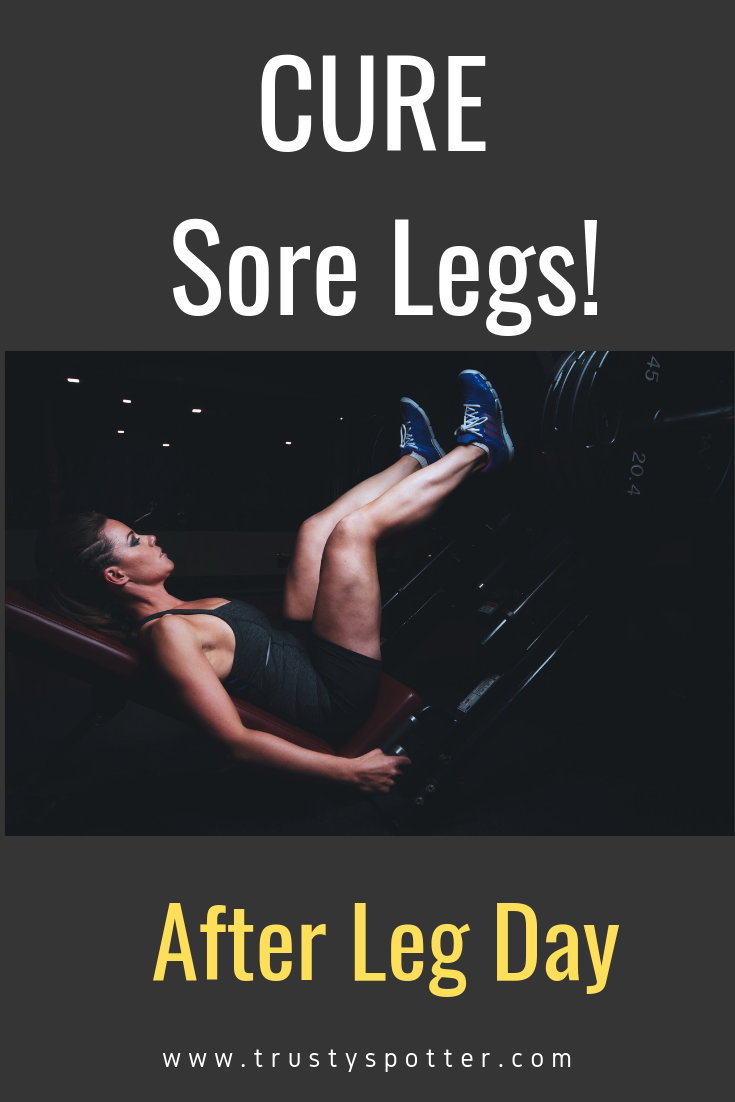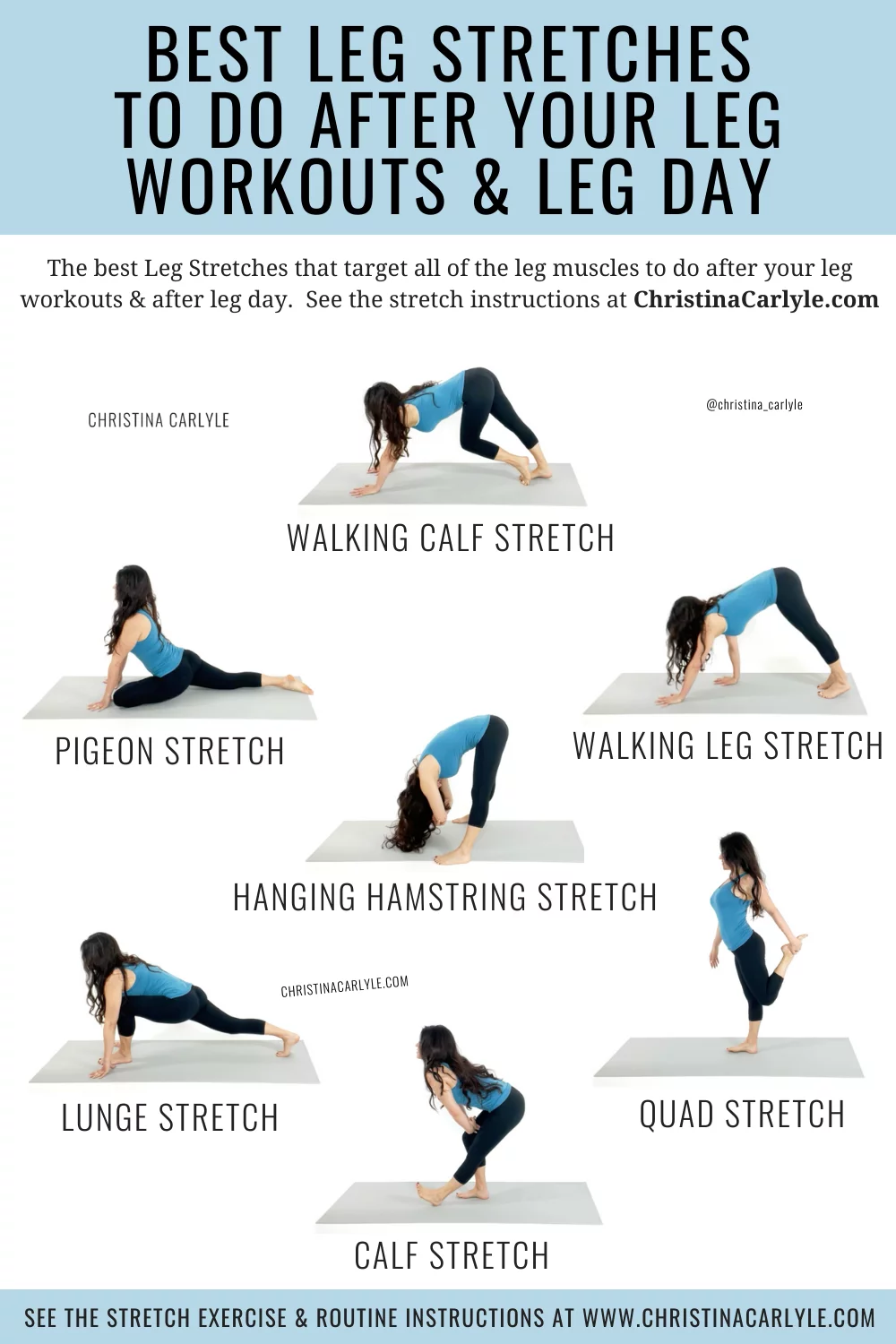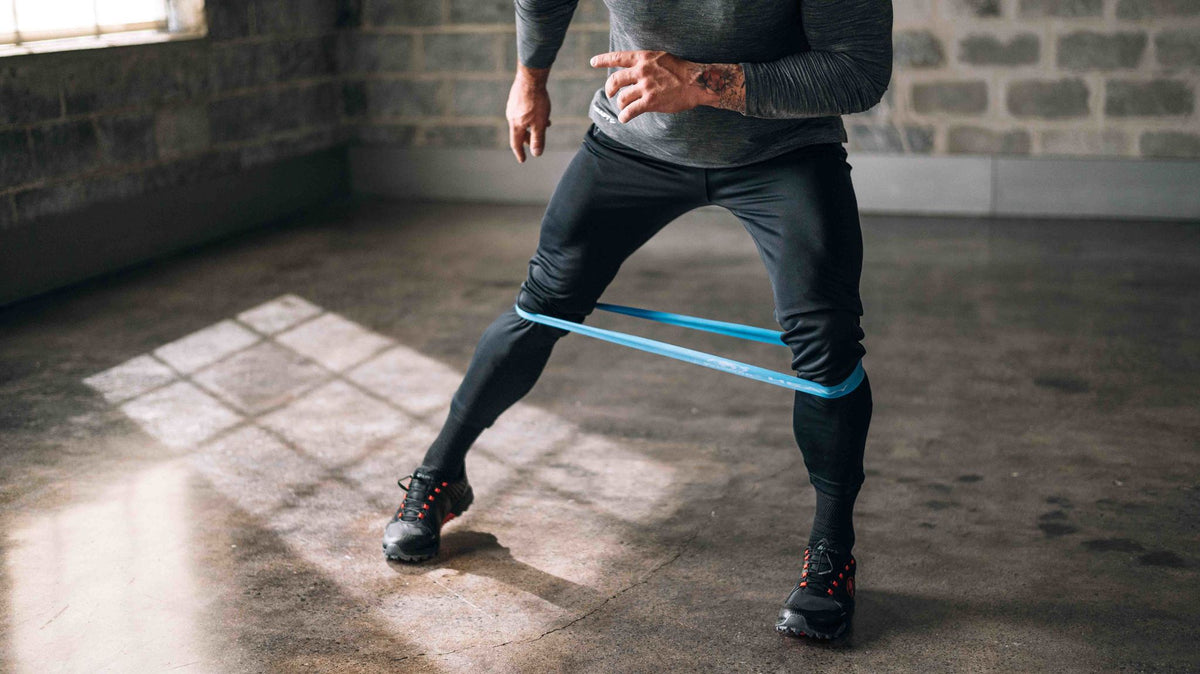Are your legs feeling like jelly after a tough leg day at the gym? We’ve all been there! It’s no surprise that leg day can leave you feeling exhausted and sore. But don’t worry, we’ve got you covered. In this article, we’ll discuss five simple ways to help you recover faster after leg day. So, get ready to say goodbye to those post-leg day struggles and hello to a quicker recovery!
One of the best ways to recover after leg day is to stretch. Taking the time to stretch your leg muscles after a workout can help relieve any tightness and improve flexibility. Whether it’s dynamic stretches like leg swings or static stretches like hamstring stretches, incorporating them into your post-leg day routine will go a long way in preventing muscle imbalances and reducing the risk of injuries.
The next tip is to foam roll. Using a foam roller on your legs can help release any knots or tight spots in the muscles, providing relief and speeding up the recovery process. It may be a bit uncomfortable at first, but trust me, it’s worth it! Want to know more? Keep reading to discover three more simple ways to recover after leg day.

5 Simple Ways to Recover After Leg Day
Understanding the Need for Recovery
Leg day at the gym can leave you feeling exhausted and sore. It’s important to understand the need for recovery after an intense leg workout. When you exercise, especially when targeting large muscle groups like your legs, microscopic tears occur in your muscle fibers. These tears lead to soreness, inflammation, and sometimes even injury. Recovery is crucial because it allows your muscles to repair and rebuild, promoting strength and growth.
Effects of Neglecting Recovery
Neglecting recovery after leg day can have detrimental effects on your overall fitness journey. Without proper rest and recovery, your muscles may not have enough time to repair themselves. This can lead to prolonged soreness, decreased performance, and increased risk of injury. Ignoring recovery can also hinder your progress and make it harder to achieve your fitness goals. It’s essential to make recovery a priority to optimize your leg day workouts and overall fitness.
Benefits of Proper Recovery
Proper recovery after leg day has numerous benefits for your body and mind. Firstly, it helps reduce muscle soreness and inflammation, allowing you to move and function more comfortably. It also improves your muscle’s ability to generate force, enhancing your athletic performance. Moreover, adequate recovery can help prevent overuse injuries and reduce the risk of muscle imbalance. Additionally, recovery promotes better sleep, boosts your immune system, and supports overall well-being.
Dynamic Stretching for Post-Leg Day Recovery
How Dynamic Stretching Aids Recovery
Dynamic stretching is a form of stretching that involves moving parts of your body through a full range of motion. Unlike static stretching, which involves holding a stretch for an extended period, dynamic stretching is more active and dynamic. It helps increase blood flow to your muscles, improves flexibility, and prepares your body for movement. Incorporating dynamic stretching into your recovery routine can help reduce muscle tension and soreness, increase joint range of motion, and enhance muscle recovery.
Effective Dynamic Stretches for Legs
Here are some effective dynamic stretches you can incorporate into your post-leg day recovery routine:
- Leg Swings: Stand near a wall and swing one leg forward and backward, keeping it straight. Repeat this motion for 10 to 15 swings on each leg.
- Walking Lunges: Take a step forward with one leg and lower your body into a lunge position. Push off with your back leg and bring it forward into the next lunge. Repeat for 10 to 12 lunges on each leg.
- High Knees: Stand tall and jog in place, lifting your knees as high as possible with each stride. Aim for 20 to 30 seconds of high knees.
Incorporating Dynamic Stretching into Your Routine
To maximize the benefits of dynamic stretching, incorporate it into your post-leg day routine. After your workout, spend 5 to 10 minutes performing dynamic stretches for your legs. Focus on targeting the major muscle groups that you worked during your leg day, such as quadriceps, hamstrings, and calves. Remember to perform each stretch in a controlled and fluid motion, avoiding any jerky movements that may strain your muscles.

Foam Rolling Techniques for Faster Recovery
What is Foam Rolling and How it Helps
Foam rolling, also known as self-myofascial release, is a self-massage technique that involves using a foam roller to apply pressure to certain areas of your body. The pressure helps release tension and tightness in your muscles, allowing for faster recovery. Foam rolling also increases blood flow to the targeted muscles, which can aid in the removal of waste products and promote healing.
Targeted Foam Rolling Techniques for Legs
To facilitate faster recovery after leg day, try these targeted foam rolling techniques:
- Quad Roll: Lie face down and position the foam roller just above your knees. Using your arms, roll up and down from your knees to your hips, focusing on any tight or tender spots.
- Hamstring Roll: Sit on the foam roller with your legs extended. Roll back and forth from your glutes to just above your knees, paying attention to any knots or adhesions in your hamstrings.
- Calf Roll: Sit on the ground with your legs extended and place the foam roller under your calves. Roll up and down from your ankles to just below your knees, pausing on any tight areas.
Best Practices for Foam Rolling After Leg Day
When foam rolling, remember to apply moderate pressure and avoid rolling over any painful or injured areas. Start with slower, gentle rolls and gradually increase the intensity as your muscles loosen up. Spend 1 to 2 minutes on each targeted muscle group, focusing on areas that feel particularly tight or sore. Foam rolling can be done after your leg workout or later in the day as part of your recovery routine, but consistency is key for optimal results.
Nutrition and Hydration for Optimal Leg Day Recovery
Importance of Proper Nutrition
Proper nutrition plays a crucial role in post-leg day recovery. After an intense workout, your body needs the right nutrients to replenish energy stores and repair muscle damage. Consuming a well-balanced meal or snack within 30 minutes to an hour after your leg day workout is essential for maximizing recovery.
Key Nutrients for Muscle Repair
To support muscle repair and recovery after leg day, prioritize the following nutrients:
- Protein: Protein is essential for muscle repair and growth. Include lean sources of protein, such as chicken, fish, tofu, or Greek yogurt, in your post-workout meal.
- Carbohydrates: Carbohydrates replenish glycogen stores in your muscles, providing energy for recovery. Opt for complex carbohydrates like whole grains, fruits, and vegetables.
- Healthy Fats: Healthy fats help reduce inflammation and support overall recovery. Include sources like avocados, nuts, seeds, and fatty fish in your diet.
Hydration Tips for Efficient Recovery
Staying hydrated is vital for optimal recovery after leg day. Water plays a crucial role in regulating various bodily functions, including muscle repair and nutrient absorption. Aim to drink enough water throughout the day, especially before, during, and after your leg day workout. If you’re engaging in prolonged or intense exercise, consider replenishing electrolytes with a sports drink or coconut water. Listen to your body’s signals and make sure to hydrate adequately to support your recovery process.
Active Recovery Exercises for Sore Leg Muscles
Definition and Benefits of Active Recovery
Active recovery involves engaging in low-intensity exercises or activities that help promote blood flow, reduce muscle soreness, and aid in muscle recovery. It’s an effective way to keep your body moving while allowing your muscles to recover from the intense leg day workout. Active recovery exercises can help alleviate muscle stiffness, improve flexibility, and enhance circulation.
Effective Active Recovery Exercises for Legs
Here are some effective active recovery exercises for your sore leg muscles:
- Light Walking or Jogging: Engage in a gentle walk or light jog to promote blood flow and reduce muscle stiffness. Start with 10 to 15 minutes and gradually increase the duration as your muscles feel better.
- Cycling: Hop on a stationary bike or go for an easy ride to engage your leg muscles without putting too much stress on them. Aim for a relaxed pace and cycle for 15 to 20 minutes.
- Swimming: Swimming is a low-impact exercise that provides a full-body workout while minimizing stress on your joints and muscles. Swim laps or participate in a water aerobics class for 20 to 30 minutes.
Incorporating Active Recovery Into Your Routine
To incorporate active recovery into your routine, schedule dedicated days for low-intensity exercises. Aim for at least one active recovery day after your leg day workout, but you can include more if needed. Listen to your body and modify the exercises based on your muscle soreness and fatigue levels. Remember that active recovery should not be as intense as your regular leg workout, but rather a way to keep your body active and promote overall recovery.
The Role of Rest and Sleep in Leg Day Recovery
Understanding the Importance of Rest
Rest is just as important as exercise when it comes to leg day recovery. Giving your body ample time to rest and recover is crucial for healing muscle tissue and restoring energy levels. Rest allows the body to repair damaged muscle fibers and replenish energy stores, ultimately leading to muscle growth and improved performance.
Optimizing Sleep for Muscle Regeneration
Quality sleep is essential for muscle regeneration and overall recovery. During sleep, your body releases growth hormones that promote muscle repair and growth. Aim for 7 to 9 hours of uninterrupted sleep each night to optimize the recovery process. Create a sleep-friendly environment by ensuring your bedroom is dark, quiet, and at a comfortable temperature. Establish a bedtime routine and limit exposure to electronic devices before bed to promote better sleep quality.
Planning Rest Days for Enhanced Recovery
In addition to adequate sleep, incorporating rest days into your workout routine is crucial for enhanced recovery after leg day. Rest days allow your muscles and central nervous system to fully recover from the stress and fatigue of intense training. Plan regular rest days, ideally 1 to 2 days per week, to allow your body to unwind, regenerate, and prepare for future workouts. Engage in light activities or stretching on rest days to promote blood circulation without causing additional strain on your muscles.

Incorporating Mobility Work into Your Recovery Routine
What is Mobility Work and How it Aids Recovery
Mobility work refers to exercises and techniques that aim to improve joint range of motion, flexibility, and overall movement quality. Incorporating mobility work into your recovery routine can help relieve muscle tension, improve posture, and prevent muscular imbalances. It aids in the recovery process by promoting blood flow, reducing muscle stiffness, and enhancing overall mobility.
Essential Mobility Exercises for Leg Day Recovery
Here are some essential mobility exercises to incorporate into your leg day recovery routine:
- Hip Flexor Stretch: Kneel on one knee with the other foot flat on the ground in front of you. Lean forward, stretching your hip flexor. Hold the stretch for 30 seconds on each side.
- Ankle Mobility Exercise: Sit on the ground with one leg straight and the other ankle crossed over the knee. Gently apply pressure to the crossed leg’s knee, pushing it toward the ground. Hold for 30 seconds on each side.
- Deep Squat Hold: Stand with your feet hip-width apart and slowly lower into a deep squat position. Hold the position for 30 seconds, focusing on maintaining good form and breathing deeply.
Tips for Integrating Mobility Work into Your Schedule
To effectively integrate mobility work into your recovery routine, set aside dedicated time for these exercises. Aim to perform mobility exercises at least 2 to 3 times a week, either after your leg day workouts or on rest days. Start with 10 to 15 minutes of mobility work and gradually increase as your flexibility and mobility improve. Focus on the areas that feel tight or restricted, but remember to move through the exercises in a pain-free range of motion.
Avoiding Overtraining and Injury After Leg Day
Signs of Overtraining and Potential Risks
Overtraining occurs when you push your body beyond its capacity to recover. It can lead to decreased performance, chronic fatigue, mood changes, increased risk of injury, and a weakened immune system. It’s important to listen to your body and watch out for signs of overtraining, such as persistent muscle soreness, decreased motivation, elevated resting heart rate, and disturbed sleep patterns. Avoiding overtraining is essential for long-term progress and maintaining a healthy balance in your fitness routine.
Preventing Injuries with Proper Technique
Injuries can occur if proper technique and form are not prioritized during leg day workouts. To prevent injuries, ensure you have proper guidance and instruction on exercises before incorporating them into your routine. Start with lighter weights and focus on mastering the correct technique before increasing intensity. Pay attention to your body’s signals and modify exercises if you experience pain or discomfort. Consider working with a qualified personal trainer to learn proper form and technique for various leg exercises.
Listening to Your Body’s Signals for Safe Recovery
Your body is an excellent guide when it comes to recovery after leg day. Pay attention to how your muscles feel and adjust your recovery routine accordingly. If your muscles feel particularly sore or fatigued, consider taking additional rest days or engaging in light active recovery exercises. Gradually increase the intensity and duration of your workouts as your body becomes more accustomed to the stress. Remember, recovery is individualized, so listen to your body’s signals and prioritize self-care to prevent overtraining and injury.

Utilizing Supplements to Support Leg Day Recovery
Understanding the Role of Supplements
Supplements can play a supportive role in aiding leg day recovery, but they should not replace a well-balanced diet. It’s important to consult with a healthcare professional or registered dietitian before incorporating supplements into your routine. Supplements may help fill in nutritional gaps or provide additional support for muscle recovery and repair.
Effective Supplements for Muscle Recovery
Here are some effective supplements that may support leg day recovery:
- Protein Powders: Protein powders, such as whey or plant-based proteins, can provide a convenient and easily digestible source of protein to aid in muscle repair.
- Branched-Chain Amino Acids (BCAAs): BCAAs are essential amino acids that can help reduce muscle soreness and support muscle protein synthesis.
- Creatine: Creatine is a popular supplement known for its ability to enhance muscle strength, power, and recovery.
Consulting with a Professional for Personalized Guidance
Supplement needs vary from person to person, and it’s important to seek personalized guidance from a healthcare professional or registered dietitian. They can assess your specific needs, goals, and dietary habits to determine if supplements are necessary or beneficial for your leg day recovery. They can also recommend suitable brands, dosages, and timing for optimal results.
Conclusion
Taking the necessary steps for successful leg day recovery is crucial for achieving long-term fitness goals. By understanding the need for recovery, incorporating dynamic stretching, foam rolling techniques, proper nutrition, hydration, and active recovery exercises, you can optimize your body’s ability to repair and rebuild after intense leg workouts.
Prioritize rest, sleep, mobility work, and avoiding overtraining and injury to maintain a balanced and effective fitness routine. Supplement use should be approached with caution, and professional guidance is recommended. By following these simple ways to recover after leg day, you’ll set yourself up for continued progress and success in your fitness journey.
So go ahead, give your legs the recovery they deserve and conquer your next leg day with confidence!




